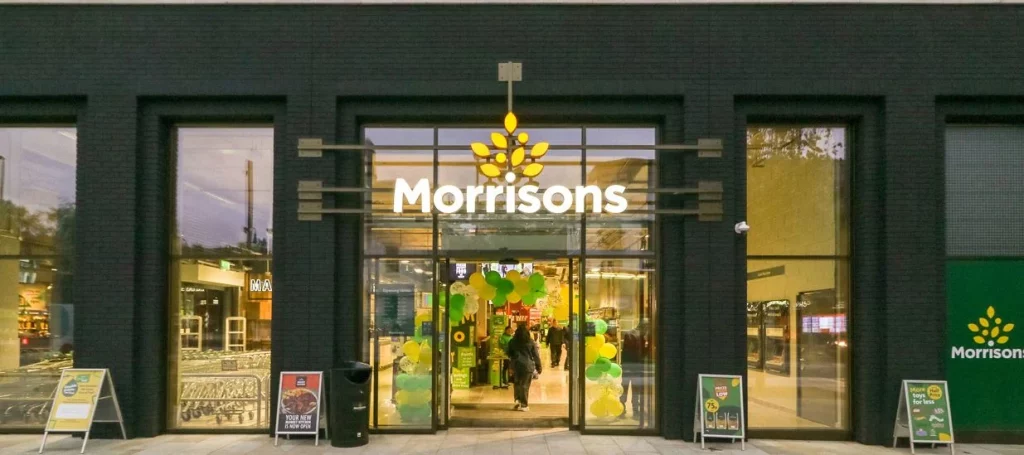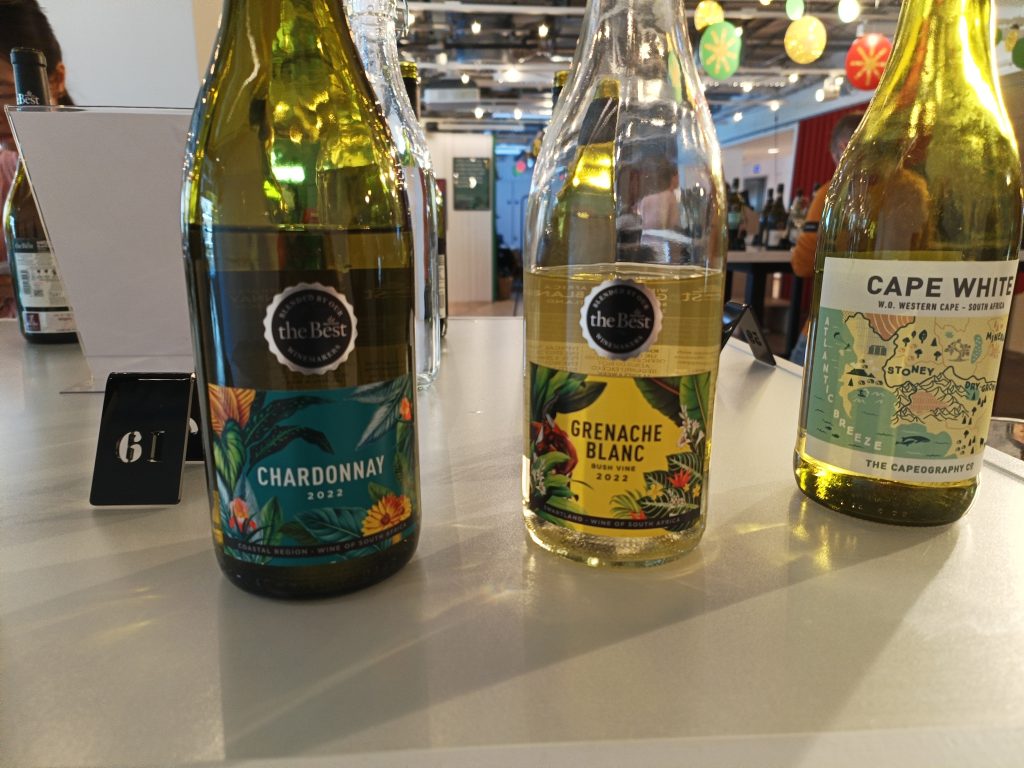Morrisons looks at reformulating mid-tier wines to hit lower ABV
Morrisons is looking at reformulating some of its mid-tier and cheaper range to hit a lower ABV and keep a consistent price point for its customers, it has said, while simultaneously looking to broaden its range of more premium wines.

Speaking to the drinks business at a recent tasting, category director BWS John Morris and wine buying manager Emma Jenkinson – who took over from Mark Jarman in May – explained that it was one of the ways that the retailer is working to cater for customers at all price points.
“We have quite openly looked to reformulating some of our mid-tier and cheaper range within key, best value-quality ration,” Morris said. “We’ve tried to hit that 10.5% ABV so we can keep some consistency in the price point for our customers.”
Emma Jenkinson added that, with wine “it is about getting that sweet spot of what is the right abv level”, and the team are currently trialling this to gauge customers reaction.
This trial includes a red and a white Spanish wine at 10% ABV, the Marques De Leon Tempranillo Red (£3.99) (the white was not at the tasting), as well as a South African, Mount Rozier Fruit Bomb, from Journey’s Cape (£8). It also has three 7% ABV wines from Australiam a Sauvignon Blanc, a Shiraz and a rose from Australian Vintage which act “as an introduction for our customers to that alcohol level”.
“I think it’ll be really interesting to gauge their reaction. After that how much do we expand that level? Because clearly this there is a duty benefit, but actually the wines themselves are really good expressions of those wines at 7%,” Jenkinson said.
Morris added that with the new duty breaker in beer of 3.4%, not only would there be more lagers at a cheaper price, but more premium brands could emerge with a lower abv – which would also help boost. Additionally, thee more that no and low alcohol beer suppliers do through sponsorships deals and the more that larger experienced companies such as Diageo talk about no alcohol versions of their products at the same time as the mainstream alcoholic parent brand, the more it would boost the credibility of the no and low product – which will filter through to wine.
“I think that wines [have] probably traditionally been the toughest one to get right quality-wise but from five years ago to now it has improved immensely,” he said. “And I think customers are starting to get that especially with sparkling [wine]. There’s probably a little bit to go if we’re going to be honest, but I think I think it’s it’s going the right way.”
“And so at that point, I think those mid range wines will start to really gain a place within the range and I think that’s quite exciting.”
South Africa

The retailer has also refreshed its South African Range with a trio of new wines as well as refreshing the branding of its own label South African wines to “add colour back into the fixture” and makes it “more obvious that it’s here”, wine sourcing manager Charles Cutteridge said.
It includes a white and a red blend that “capture the spirit of blends in South Africa,” Cutteridge said. “Traditionally that would be an international style blend, but [we wanted to] do it with a more South Africa style blend, with international varieties to finish off the blend rather than being based around those international varieties”.
The white is a blend of 40% Chenin with 30%, while the red is 50% Pinotage-based, with 20% Cinsault, 20% Grenache and 10% Carignan. “We [also] wanted to take them and make them fresher, with a more gluggable approach so you can finish the bottle,” he said.
On the back of almost doubling its volume sale of Chenin Blanc, it has introduced a more premium oaked Chenin, Capeography Co Old Vine Chine Blanc (£10) from Paarl. “We were looking to get alternative wines on shelf to white Burgundy which is quite challenging, so looking at how we get those styles on shelf, but at really good value,” he said.
Two other red South African wines added to the range include Roodeberg Red from the Western Cape (£11.50), a blend of Shiraz, Cabernet Sauvignon, Tannat, Durif and Merlot; and Roodeberg Black, a fruit-forward blend of Cabernet Sauvignon, Shiraz and Petit Verdot.
Partner Content
Jenkinson also sees great opportunity in Eastern Europe. “I think Eastern Europe is going to be really exciting. We’ve got a Moldovan sparkling that we’ve had in the range for a little while now, but it’s really starting to resonate with customers,” she explained. “We’re just exploring other opportunities as well, so Moldova, we’re looking at Ukraine and Romania.”
Eastern Europe has the potential to emulate the success of Portugal, she said, “in the sense that we expanded our Portuguese range quite quickly 18 months ago and we’ve had some great results from there, so we’re hoping we can do that with Eastern Europe.”
“There’s still a lot of customers who are yet to buy into Portugal and I think there’s still room for that to grow quite a lot,” Morris added.
Other additions include a Chilean Cabernet that is “stylistically easier to approach than many cabernets out there,” according to Jenkinson , as well as a French Chardonnay (£10), to sit alongside the recently introduced Viognier, both from the Languedoc under the Best range. Other additions to the Best range include a Greek Assyrtiko from Naoussa (£12), as well a Pinot Grigio Valdadige (£11).
Boost for premium own label
The Best own label range, which has been another focus for the team, is performing well, driven by its ongoing promotion of ‘buy 3 save 25%’, which helps give customers added reassurance for trial and to broaden out and shop across the range, Jenkinson said.
“So, historically [customers] are receptive [to the Best range] and [the promotion] has given them the reassurance to maybe try a Vinho Verde or an Alvarinho and stylistically move across a little bit,” she said. “So we see it working really well on driving those lesser-known but delicious appellations or grapes that customers like as well. Having that ‘buy three’ [offer] gives them the confidence to try.”
Although the gap between branded and own label had widened in some categories, because of duty and other factors, in wine there is “less of a gap”, Morris admitted, “so we’ve probably not seen the absolute switch that we’ve seen in some categories but without a doubt there has been some of that,” he said.
But wine is still quite “daunting” to a lot of customers, Morris added “and obviously they have go-to brands and we need to recognise that.”
While some customers have had to trade down or drink less often because they’ve not got quite as much money in their pocket, there are still customers who might previously have gone to for a meal who were now treating themselves at home and buying some a little bit nicer things from the supermarket, Morris said.
“We are seeing some of our Best range and our high-end price point wines work quite well as well, so we recognise that we need to be there for all our customers,” he said.
Jenkinson said Morrisons was currently looking at a wider piece of work “around segmenting for those customers that have a higher budget and have a bit more spend”, which is likely to advance next spring.
“At the moment that’s really focused around Best‘s Chablis Premier Cru, Pouilly-Fumé, Sancerre, Amarone, and Barolo and making sure that we’ve got really good availability for customers that do want those at Christmas,” she said. “Once we get further into the wider business segment product, then we will be looking at potentially introducing a different range for those stores – but that is a bit of a work in progress.”
The idea is not so much a tier above The Best, but a range of producer-label wines for customers that want focus on wines for dinner when they’re not eating out, she said.
Read more:
Why a leading wine brand is lowering its alcohol level
Related news




